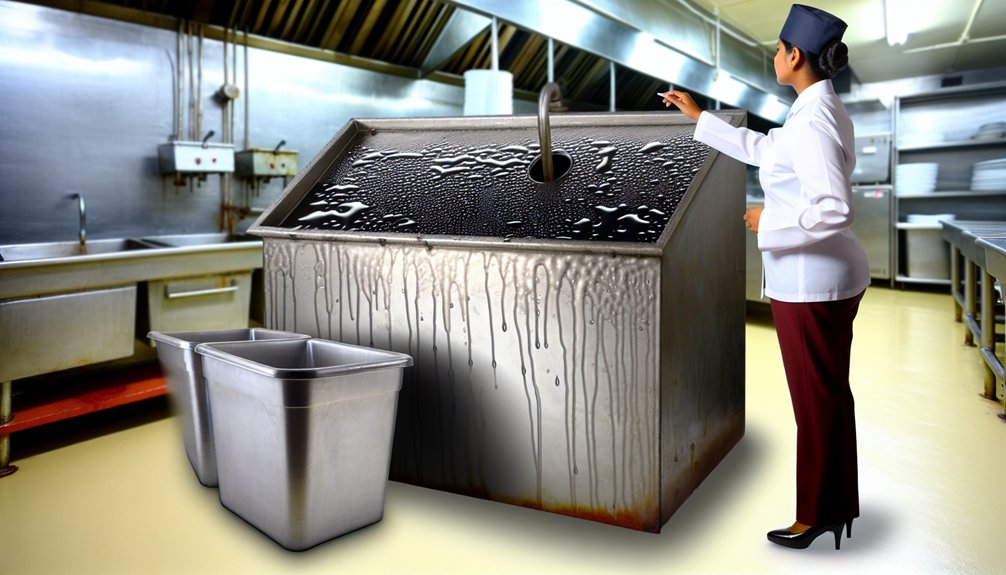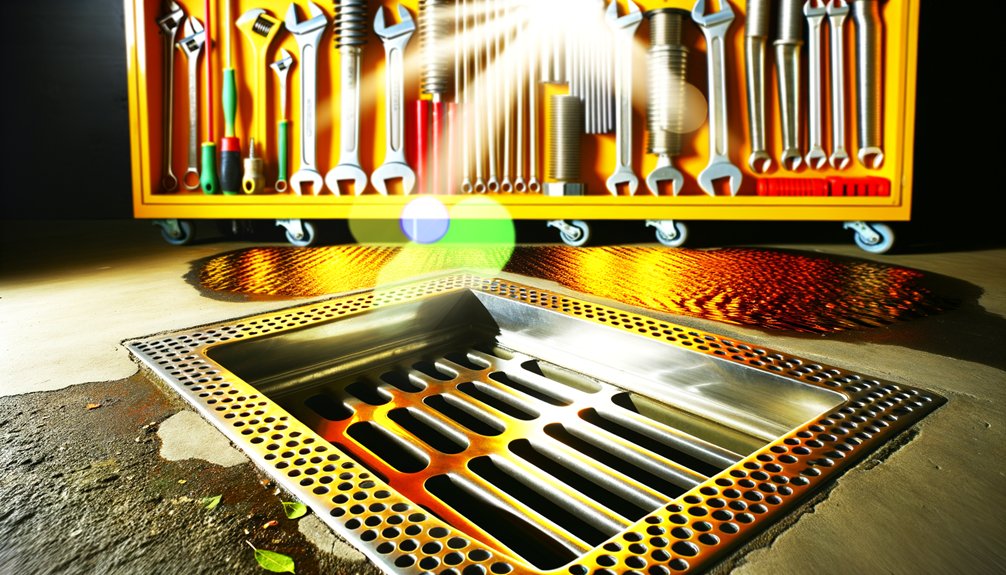Effective commercial drain maintenance hinges on three key strategies. First, establish and implement a regular maintenance schedule, ensuring inspections occur at least once or twice a year. Second, invest in employee training focused on proper waste disposal techniques, reducing the risk of clogs caused by food debris and grease. Finally, prioritize the proper disposal of grease and oils to prevent drain blockages. Understanding these practices can greatly enhance drain efficiency, paving the way for further valuable insights.
Develop and Implement a Regular Maintenance Schedule

A well-structured maintenance schedule is vital for effective commercial drain management. Implementing a routine for drain maintenance guarantees that preventative measures are taken to avoid clogged drains and other plumbing issues. Regular inspections, conducted at least once or twice a year, allow for the early detection of potential problems such as slow drainage or unpleasant odors. The frequency of these inspections should be tailored to the size and complexity of the plumbing system; larger systems necessitate more attention. Utilizing professional cleaning services for drain cleaning is important to prevent clogs and maintain peak functionality. A maintenance log should be kept to document inspections, cleanings, and any encountered issues, providing valuable insights for future planning. Proactive care through a structured maintenance schedule not only enhances the longevity of commercial drains but also mitigates the risk of emergency plumbing situations, fostering a liberated operational environment.
Train Employees on Proper Waste Disposal
While implementing a robust maintenance schedule is essential for commercial drain management, training employees on proper waste disposal is equally significant. Improper disposal practices are a leading cause of clogs, particularly due to food debris and grease. Consequently, effective employee training can substantially reduce the risk of drain blockages.
By educating staff on the importance of using designated containers for waste, businesses can prevent costly plumbing emergencies and guarantee efficient drain function. Establishing a waste management culture through regular training sessions fosters awareness, encouraging adherence to disposal guidelines and minimizing maintenance needs.
Visual reminders, such as posters illustrating proper disposal techniques, can reinforce the training and deter employees from pouring unwanted substances down drains. Ultimately, organizations that prioritize employee training on waste disposal tend to experience fewer plumbing issues, resulting in lower maintenance costs and enhanced operational efficiency, thus promoting a more liberated and sustainable workplace environment.
Dispose of Grease and Oils Properly

Proper disposal of grease and oils is critical for maintaining the integrity of commercial plumbing systems. When improperly discarded down the drain, these substances can solidify, leading to serious drain clogs and costly repairs. Implementing effective grease management practices is essential.
| Action | Description | Benefit |
|---|---|---|
| Allow to Cool | Let grease solidify before disposal. | Prevents clogging in pipes. |
| Use Paper Towels | Wipe pans clean and collect excess grease. | Reduces waste entering drains. |
| Install Grease Traps | Utilize traps to catch grease before it enters. | Maintains proper drain function. |
| Educate Staff | Train employees on proper waste disposal methods. | Enhances overall plumbing health. |
| Designate Containers | Provide specific receptacles for grease and oils. | Minimizes unpleasant odors. |
Frequently Asked Questions
How Often Should Commercial Drains Be Cleaned?
In the bustling world of commercial plumbing, drain cleaning frequency emerges as a pivotal concern. Routine maintenance schedules, ideally set for at least once or twice yearly, can prevent costly clogs and enhance drainage system longevity. For high-usage areas, like kitchens, quarterly inspections may be essential. By employing best cleaning products and effective drain technologies, businesses can adopt preventive drainage measures, ensuring seamless operations and avoiding emergency drain solutions, liberating them from disruption.
How to Maintain a Healthy Drainage System?
To maintain a healthy drainage system, one must establish a thorough maintenance schedule that includes regular inspections and pipe cleaning. Utilizing grease traps can greatly enhance clog prevention, while employing drainage tools for effective cleaning promotes ideal water flow. Awareness of potential issues like root intrusion is essential for drainage health. Consistent flushing and monitoring are key strategies that empower individuals to proactively safeguard their systems against future complications.
How to Use Instant Power Commercial Drain Maintainer?
Many may hesitate, believing that all drain cleaners are the same, but using the Instant Power Commercial Drain Maintainer requires careful adherence to drain cleaner instructions. The effectiveness hinges on proper product application tips, including allowing it to sit for at least 15 minutes. A safety precautions guide should be consulted to avoid common usage mistakes. Maintenance frequency suggestions recommend weekly use in high-traffic areas, aligning with customer reviews insights on ideal performance.
How Do Professionals Clear Drains?
Professionals employ a variety of drain cleaning techniques to guarantee peak functionality. Utilizing high-pressure water jets, they effectively clear stubborn clogs. Video inspection allows for precise identification of issues, while drain snake usage tackles minor blockages. Chemical treatments, including enzyme-based solutions, help digest organic buildup, and root removal techniques address deeper problems. Regular maintenance contracts and attention to grease traps enhance longevity, while emergency services are available for immediate concerns, providing extensive drain management.



